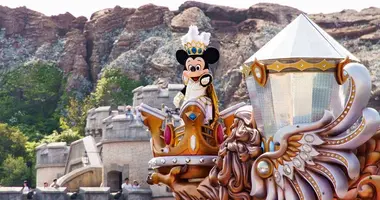Tokyo Bay Aqua Line: A marvel of engineering connecting Kanagawa and Chiba
- Published on : 20/03/2024
- by : Japan Experience
- Youtube
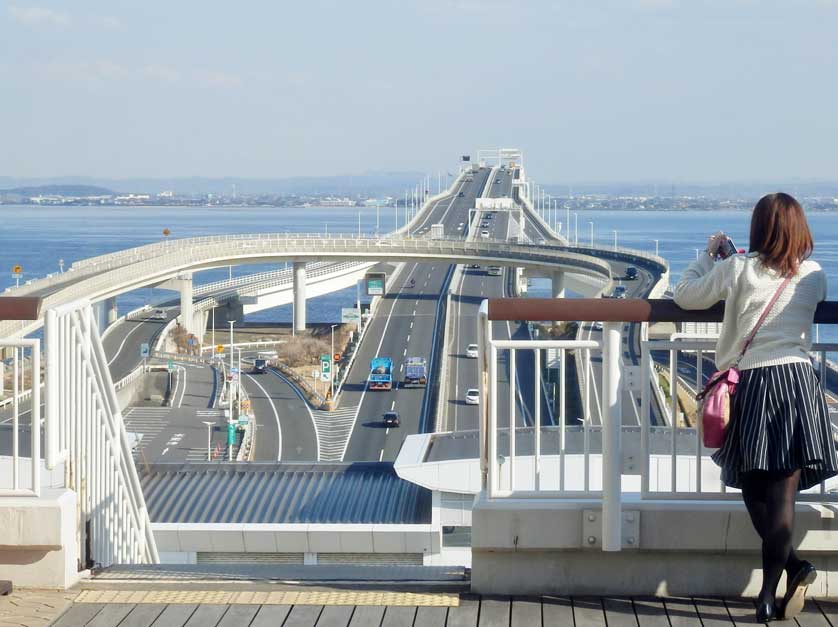
Umihotaru view towards the bridge spanning to Chiba
The Tokyo Bay Aqua Line, also known as the Trans-Tokyo Bay Highway, is a remarkable feat of engineering that spans Tokyo Bay, connecting Kawasaki in Kanagawa Prefecture to Kisarazu in Chiba Prefecture. This 23.7-kilometer expressway combines a bridge and tunnel system, offering a unique transportation experience for travelers. Opened on December 18, 1997, after 23 years of planning and 9 years of construction, the Aqua Line has become an integral part of Japan's infrastructure, significantly reducing travel time between two important industrial areas. As we delve into the details of this impressive structure, we'll explore its significance, technical specifications, unique features, and impact on regional connectivity.
Overview and significance of the Tokyo Bay Aqua Line
The Tokyo Bay Aqua Line is a vital transportation link that has transformed travel between Kanagawa and Chiba Prefecture. Before its construction, the journey between these two areas required a 100-kilometer drive around Tokyo Bay, passing through the congested heart of the capital. The Aqua Line has drastically reduced this distance, allowing travelers to cross the bay in just 15 minutes.
This expressway consists of two main sections:
- A 9.6-kilometer undersea tunnel known as the Aqua Tunnel
- A 4.4-kilometer bridge called the Aqua Bridge
The Aqua Line has not only improved travel efficiency but also stimulated economic growth in the region. It has enhanced connectivity between the industrial areas of Chiba and Kanagawa, facilitated easier access to leisure spots on the southern Bōsō Peninsula, and helped redistribute traffic away from central Tokyo.
Technical specifications and construction details
The construction of the Tokyo Bay Aqua Line was a monumental engineering challenge that required innovative solutions and cutting-edge technology. Some key technical details include:
- The tunnel section is 60 meters below sea level at its deepest point
- The tunnel has a diameter of 13.9 meters
- The bridge has a longest span of 240 meters
- The total width of the expressway is 22.9 meters, accommodating four lanes of traffic
- The project cost ¥1.44 trillion (US$11.2 billion) to complete
Construction of the Aqua Line involved the use of advanced shield machines for tunnel excavation. These massive machines, weighing 3,200 tons and measuring 14.14 meters in diameter, were crucial in driving the Aqua Line through the challenging undersea environment.
The project also required careful consideration of environmental factors, including soft seabed soil, wind, tides, and potential earthquakes. Engineers had to develop new technologies and construction methods to overcome these challenges, earning the project the nickname "Apollo project of civil engineering."
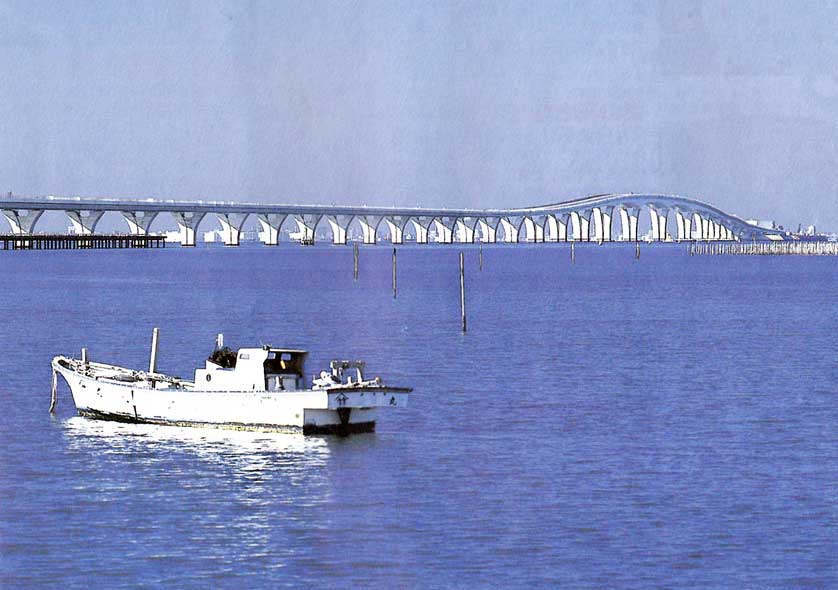
Tokyo Bay Aqua Line Bridge
The unique Umihotaru artificial island
Umihotaru, which translates to "Sea Firefly," is a remarkable artificial island that serves as a transition point between the tunnel and bridge sections of the Aqua Line. This five-story structure offers much more than just a rest stop for travelers:
- The lower three floors provide ample parking space
- The upper two floors house restaurants, souvenir shops, and viewing platforms
- Visitors can enjoy panoramic views of Tokyo Bay from the observation decks
- The Aqua-Line Theater offers insight into the engineering behind the project
Umihotaru has become a destination in its own right, attracting visitors who come to experience its unique architecture and stunning views. On clear days, visitors can see the Tokyo Skytree, the skyline of Yokohama, and even Mount Fuji in the distance.
Tolls and cost considerations for travelers
While the Tokyo Bay Aqua Line offers significant time savings, it comes at a cost. The toll structure is as follows:
- Regular cars: ¥3,140 cash (¥2,320 with ETC card)
- Small cars and motorcycles: ¥2,510 cash (¥1,860 with ETC card)
- Large vehicles: ¥5,190 cash (¥3,830 with ETC card)
To encourage usage, discounts are available for ETC users, with tolls reduced to ¥1,000 on weekends and holidays. Despite these incentives, the relatively high cost has been a subject of debate and has limited the expressway's impact on reducing central Tokyo traffic.
For budget-conscious travelers, bus services are available that use the Aqua Line. A one-way trip from Kawasaki Station to Umihotaru costs ¥1,080, while a trip to Kisarazu is ¥1,440.
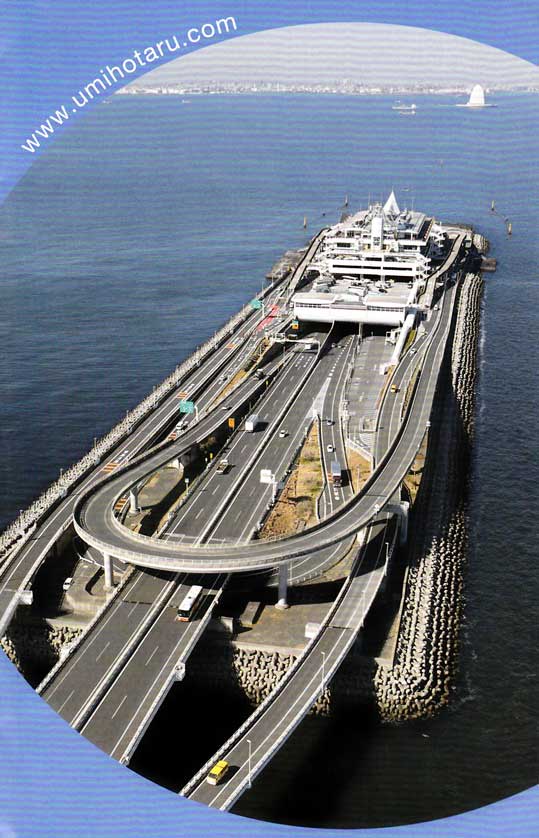
Umihotaru Island
Impact on travel time and regional connectivity
The Tokyo Bay Aqua Line has had a significant impact on travel times and regional connectivity:
- The journey between Chiba and Kanagawa has been reduced from 90 minutes to just 15 minutes
- Travel time from Haneda Airport to Kisarazu has been cut by approximately 45 minutes
- The expressway has facilitated easier access to the Boso Peninsula, boosting tourism in the area
This improved connectivity has led to various positive effects:
- Increased population and tax revenue in Kisarazu
- Growth in the number of commuters using bus services across the bay
- Rise in property values in areas near the Aqua Line
- Estimated economic benefits of ¥86.9 billion between April 2014 and September 2016
However, the benefits have not been evenly distributed across Chiba Prefecture, with some northeastern municipalities yet to see significant impacts from the expressway.
Environmental considerations and the Kaze no Tō
The Tokyo Bay Aqua Line project incorporated several environmental considerations in its design and operation:
- The Kaze no Tō (Tower of Wind) provides ventilation for the tunnel
- The tower harnesses the bay's almost-constant winds for power
- Recent LED retrofitting on the bridge has reduced power consumption and carbon emissions by 40%
The Kaze no Tō, designed by acclaimed architect Toyo Ito, is a striking structure that rises from the sea midway along the tunnel. Its two elegant towers, resembling wind-filled sails, capture the bay's winds to supply fresh air to the tunnel below. While not accessible to the public, it has become an iconic part of the Tokyo Bay landscape.
The project also required careful management of the marine environment during construction and continues to monitor its impact on Tokyo Bay's ecosystem.
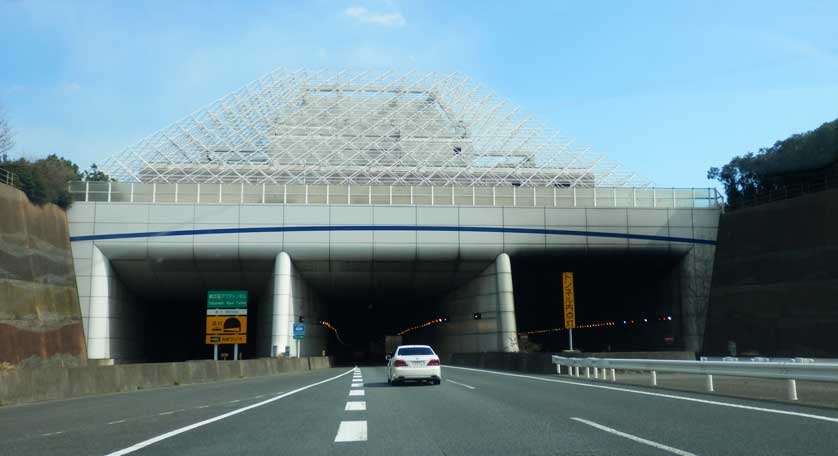
Tokyo Bay Aqua Line, Kawasaki Tunnel Entrance
Experiencing the Aqua Line: Driving and public transportation options
Travelers have several options for experiencing the Tokyo Bay Aqua Line:
Driving:
- Personal vehicles can use the expressway, with tolls collected on the Kisarazu side
- The journey offers unique views of industrial landscapes on the Kawasaki side and a transition to Chiba's more open scenery
- Drivers can stop at Umihotaru for rest, refreshment, and sightseeing
Public Transportation:
- Several bus services utilize the Aqua Line, connecting various Tokyo stations to destinations in Chiba
- Buses run frequently during the day, with some stopping at Umihotaru
- The last buses from Umihotaru to Kawasaki and Kisarazu depart at 5:56 PM and 5:29 PM respectively
Whether driving or taking public transport, the Tokyo Bay Aqua Line offers a unique travel experience. From the long undersea tunnel to the expansive bridge and the fascinating Umihotaru rest stop, it's a journey that showcases Japan's engineering prowess and provides stunning views of Tokyo Bay.
When planning your trip, be sure to check local weather information, as the expressway may close during typhoons or severe storms. Also, consider timing your visit to Umihotaru to catch the sunset or nighttime views of the illuminated Tokyo skyline for a truly memorable experience.
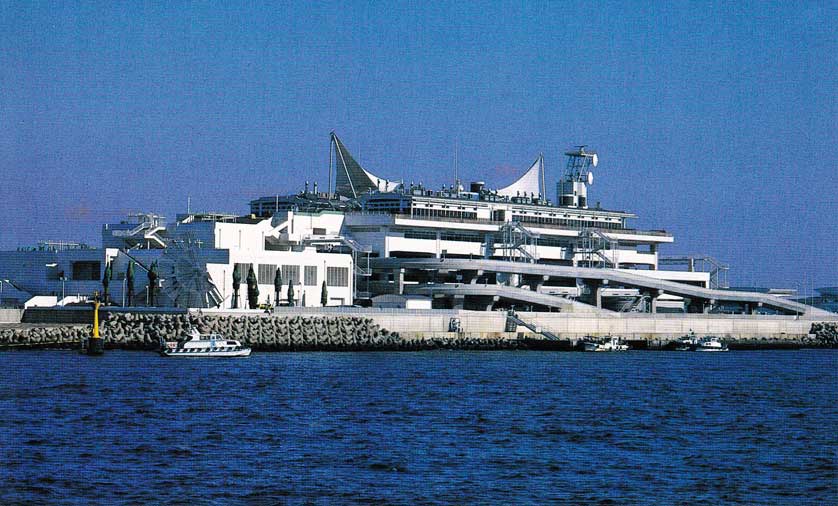
Umihotaru Rest House, Tokyo Bay Aqua Line















